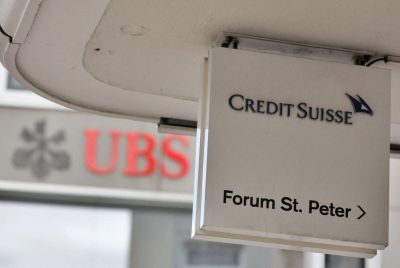Could high-frequency trading tricks be killed off by a blockchain-based 'capital markets utopia'?

A blockchain-based "capital markets utopia" that could prevent market manipulation associated with high-frequency trading (HFT) strategies has been considered in a report by global management consulting firm Oliver Wyman and financial services company Euroclear.
This is not the first time someone has said a blockchain paradigm could prevent iniquitous high-frequency trading (HFT) side effects. Patrick Byrne of Overstock.com and the T0 distributed ledger system has been saying for some time that he looks forward to the day when blockchains finally clean up Wall Street.
HFT strategies employ a sort of steroid-enhanced sense of arbitrage powered by sheer speed. A high-frequency trader could see the euro is not quoted the same way in this market as it is that market, for instance, and legitimately exploit the price discrepancy. It uses super-fast wires that relay trades in micro-seconds, resulting in systemic market manipulation and front running of trades, as famously exposed in Michael Lewis's book Flash Boys.
Ben Shepherd, partner at Oliver Wyman and co-author of the report told IBTimes UK: "In a blockchain architecture, counterparties agree to transfer ownership of an asset in [near] real-time and therefore stop the ability to amass a multitude of trades and net out at the end of the day. Therefore, HFT cannot turnover assets as quickly as they do today / generate acritical market demand, because they must settle each trade immediately."
The report anticipates the execution venues may remain much as they are but "given that trading strategies such as HFT account for such a large share of traded volumes [and hence fee revenue], profound changes to market structure may have a knock-on impact on exchanges and other venues".
Hybrid systems
Weighing up the impact blockchains could have on private trading companies, particularly market makers and high-frequency traders, the report offers various shades of compromise, including hybrid systems that could accommodate HFT. It said: "If trading moves to pre-trade validations of ownership prior to the asset being sold, HFTs will need to wait (for even just a few seconds) for each settlement cycle before they can transact again.
"This would give rise to a very substantial slowdown in their rate of activity, which may mean that the scope of blockchain is limited only to post-trade processes in markets where HFT is insignificant, or in markets which could operate on hybrid models, enabling HFTs to trade on credit lines that are regularly cleared through the blockchain consensus cycle."
Shepherd explained: "If there was a hybrid model for post trade [whereby there is a mechanism that a participant or infrastructure would be able to offer depth of available inventory for HFTs] then potentially, blockchain could be serviceable by HFTs, but would need this intermediary to make good on their trading when they do not have the assets to DVP on the blockchain consensus cycle."
The report, Blockchain In Capital Markets: The Prize And The Journey, also considers a brave new financial system where fungible digital assets are issued on to blockchains and used as collateral, and securities are unbundled.
This means securities could be broken down into individual cash flows and the rights they encapsulate could be transferred separately. The report said this could "enable new approaches to financial engineering, enabling specialists to construct bespoke instruments consisting of individual cash flows that meet precise needs in terms of timing and credit risk".
A utopian financial upgrade would also mean "instruments could be financed by issuers selling their own instruments that match the cash flows they expect to achieve, in essence creating swaps without the need for balance sheet intermediation".
'Optimised settlement speed'
Back in the current decade, the idea that blockchains can add a level of virtuous sophistication to netting processes, for example, was touched upon recently by Blythe Masters of Digital Asset Holdings. The technology could ascertain which trades don't need to be settled instantaneously and apply what she called "optimised settlement speed"; the blockchain can allow a delay in some trades so these can be netted, reducing risk and liquidity requirements, she said.
The report also cited research proposals made by the Bank of England in 2015 that imagined fiat currency being recorded on a blockchain. It said an intermediary step might involve the following: "Commercial enterprises could create cryptocurrencies for interbank use (with permanent par value, and underpinned by near risk-free or escrowed cash holding).
"Another, simpler way, is to use existing accounts at banks where participants deposit liquidity for trading in segregated accounts, with charges to the cash ledger reflected on the balance in their trading account."
Not shy when it comes to calculating blockchain-enabled cost efficiencies, Oliver Wyman pointed out IT and operations expenditure in capital markets is currently close to $100bn to $150bn (£69bn to £104bn) per year among banks. On top of that, post-trade and securities servicing fees are in the region of $100bn, with added capital and liquidity costs as a result of current delays and inefficiencies within market operations.
© Copyright IBTimes 2025. All rights reserved.






















